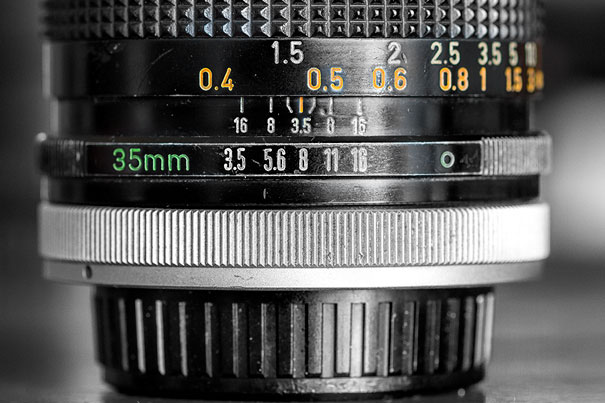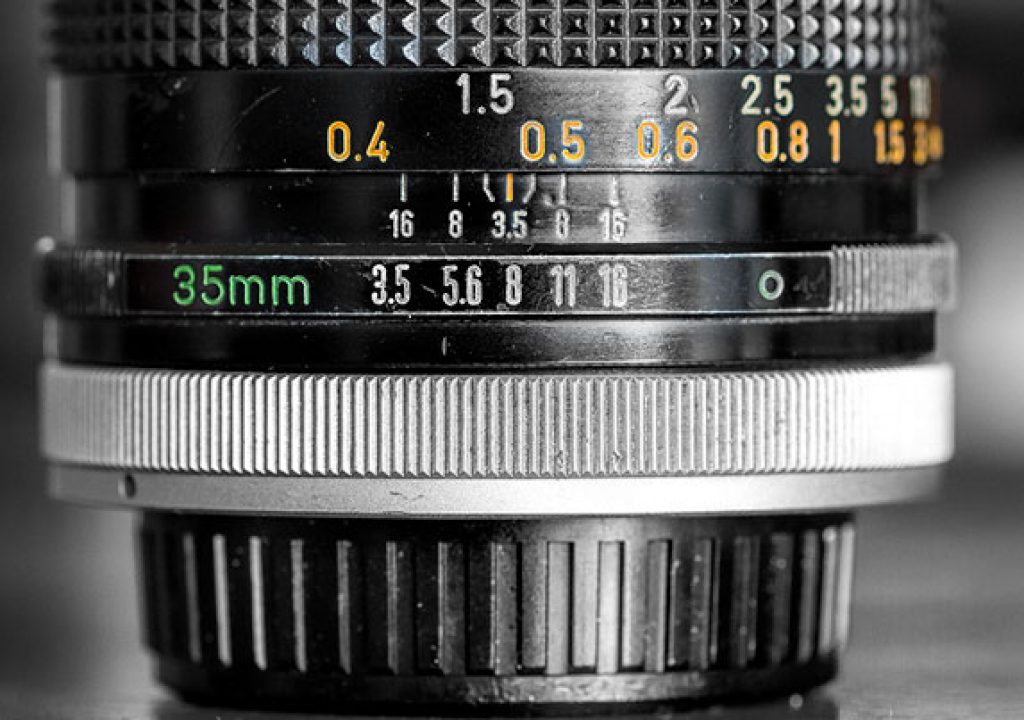
I do a lot of flower photography – looking for ways to do video, but it is a slow process -, and I use to say my lens for flowers is a 640mm. It’s a way to catch people’s attention, but it is true, as I use the long end of a 100-400mm with an APS-C sensor. But even with a normal 50mm you can do a lot of interesting flower photography, if you know your lens well.
I recently published here at PVC one article about Canon’s recent EF 100-400mm f/4.5-5.6 L IS II USM, showing how I use it and why I use it to photograph flowers. It is my lens for flowers, the one I use most of the time, because I like the working distance it gives – especially in this new version, that has a MFD or Minimum Focus Distance of 98cm – and the options it gives in terms of the relation between the flower photographed, the foreground and background, as the balance between these elements is important to the way I photograph flowers.
A section of a full photo taken with the 100-400mm lens at its closest distance, 98cm and at 400mm. Who said a long lens is only for distant subjects?
There is another good reason for me to use my 100-400mm lens: through my workshops on flower photography I try to make people understand that “Macro” and “Flowers” do not need to be in the same sentence all the time, and that they can do excellent photographs of flowers with a normal lens, starting with the humble 18-55mm kit lens that comes with many DSLRs. Flowers, in fact, can be photographed with different cameras – even with smartphones – for good results, but here I’ll center attention on DSLRs.
The usual change of words when I show my photographs of flowers has two tones: “they’re done in macro”, and, when I show they are not, then I’ve “a good lens, a professional lens, a very expensive lens”, or whatever. Not necessarily, and I’ve tried to share that understanding with people, simply by asking them for their lens and using it to get some results that mostly baffle them. You see, people, in many cases, do not know well the lens they’re using. That’s one of the reasons why they can not get the maximum out of it. Interesting, I find that many professionals suffer from the same problem.
It does not matter if you’re creating photographs of flowers or doing a video of them, the better you know the lens being used, the easier it becomes to get sound results. For me, knowing a lens well begins with knowing something that is paramount to get close to the flowers: the MFD or Minimum Focusing Distance. That value, together with the focal length, gives me a good idea of the magnification achieved with the lens, the most important element when photographing – or capturing on video – flowers. And many other subjects with similar size.
Macro 1:1 Only Happens at MFD
There is a limitation when using normal zoom and long lenses, and that is the size of the subject. When dealing with very small subjects, and here I think of tiny flowers, a macro lens may be a good choice, especially if you’re interested in going all the way up to real macro, meaning 1:1, or life-size. Although there are different notations to it – “Life Size”, “1x” and “1:1” – all mean the same: that the lens will cover an area equal to the size of the film or sensor. So for a full frame 35mm camera, that means you can fill the frame with an area as small as 24mm x 36mm (for an APS-C camera it is around 22.5mm x 15mm, depending on the sensor brand).
What many people seem to forget is that the 1:1 magnification is achieved only at the MFD – Minimum Focusing Distance. This means that when using a macro lens at 1:1 the sensor – on APS-C – will only cover an area of 22.5mm x 15mm of the flower. For many of the common flowers amateurs and professionals photograph or capture on video, that’s a bit too little, in fact, if they want to show the whole flower. And that’s where normal lenses enter as a good option.
I’ve created one image (see above) with some examples of what can be achieved with different lenses, simply by using their close-up possibilities and the closest MFD achievable. The examples here go from the normal 50mm “nifity fifty” to a series L lens, the 17-40mm zoom, also showing results which are easily accessible to the zoom lenses used by most people. In fact, some of the lenses used here are old, meaning that new models will, in many cases, offer better magnification and quality. Still, for this experience, the four models used will suffice to show what can be done.
The flower used is a small specimen. The branch photographed has some 6.5 cm in length, meaning the flowers are much smaller than many species usually photographed. I decided to use it because it makes my point: even with small flowers you still get a lot of detail using a 50mm lens. Check (on the poster) the whole frame taken with the 50mm focused at 45mm (MFD) on an APS-C body, my EOS 50D with bare 15 MP. Check, beside it, a segment taken at 100% of the original 4752×3168 pixels image. It was reduced here, to fit on the page, but should give you an idea of what you can expect to achieve.
The photo above is an example of what can be done with the 100-400mm. The original file clearly shows the insect on the flower petal. If the insect was the center of attention, then a macro would be needed, but for many flowers this approach is perfect
I focus on the results of the 50mm because of the lenses used, it is the one that offers less magnification: bare 0.15X. This means that with a zoom you’ll be able to get closer to macro. In fact, even the – 14 year old – Canon EF 28-105mm f/3.5-4.5 II USM, offering a magnification of 0.19X, is already a step in the right direction, as the image on the poster shows. It focuses as close as 50cm at 105mm.
The Canon EF 28-135mm f/3.5-5.6 IS USM lens, from 1998, is another good example of what the close up from these zooms can achieve. This one has the MFD, as the previous zoom, at 50cm, offering a 0.19X magnification. The fact that it is a 135mm at the long end offers good coverage for flowers and other subjects, in my experience. In fact, I’ve had this zoom since its launch and I still use it, especially for video, as its focal length coverage is quite interesting.
New Lenses Offer More Choices
Quite impressive is the EF 17-40mm f/4L USM, which is my standard go anywhere zoom and has been since its launch in 2003. At 40mm it has a MFD of 28cm and offers a 0.25X magnification, meaning it surprises everyone that picks it up and looks through the viewfinder. Besides being great at 17mm to relate one subject to its environment, as we so many times do in photography and video, at 40mm it enters into the realm of close up. Add some extension tubes to this lens and you are within what is already considered macro. A 12mm extension tube gives you 0.83x while a 25mm extension tube transforms the 17-40 in a 1.02x macro. An interesting option…
Now that we’re dealing with these numbers, it is good to go back to a real macro lens, and remember, as I wrote above, that it only offers 1:1 at the MFD, which in the case of the Canon EF 100mm f/2.8L IS USM Macro lens. At 30cm it is a MACRO 1:1 lens, but when it reaches a distance of 39cm it’s already 1:2 and at 48cm it gives me a 1:3 relation, not much different from what can be achieved with the new Canon EF 100-400mm f/4.5-5.6L IS II USM, the lens that led me to write this and the previous article.
As I wrote before, the 100-400mm is my lens for flowers, because working around 1/3 life size – focal length of 400mm at a 98cm MFD -, it gives me not only a better perspective than my 100mm MACRO offers, it also allows me more play in terms of backgrounds and foregrounds, elements essential to my photography. And it allows me to keep at a longer distance from my subjects, which in the case of insects is essential.
It is obvious that a MACRO lens will have better optical quality over many of these zooms, but the difference is not so drastic to make it essential for many close up work within the 1/3 life size dimensions mentionned before. In that realm I will take a zoom lens any day over the macro. And for people just starting out photographing flowers, the best bet is not to buy a macro but… to know the lens they’re using. That’s what photography is all about.

